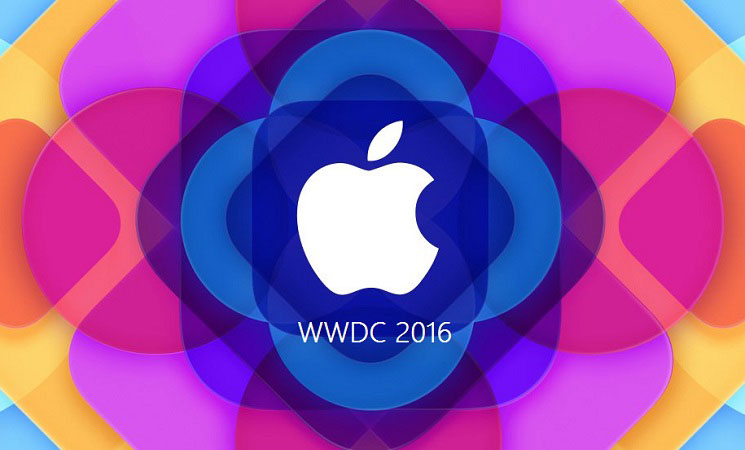
This review of WWDC 2016 focuses on macOS Sierra and iOS 10, the later of which I have started to trial as part of the Public Beta program
WWDC has come and gone for 2016 with considerable less media attention than previous years. At least, from my perspective, it appeared that way. Further, my attention was also diverted elsewhere during the week of the conference, having spent the long weekend just beforehand in Sydney with family and then activities relating to my birthday drew my attention. In short, I had other priorities and in part, the media attention that WWDC 2016 generated was less positive, which further reinforced the perception in my mind to WWDC itself.
My coverage of WWDC 2015 a year ago contain my last position on how I considered Apple in terms of expectations and their level of innovation. Much of what I had previously articulated remains unchanged, and indeed, the continued expectations that Wall Street place on Apple confirm that Apple remain relevant. WWDC this year unveiled the new structure and approach that Apple has adopted in terms of their operating systems – iOS for iPhones and iPads, tvOS for the AppleTV, watchOS for the Apple Watch and now macOS (Sierra).
The following graph summarises the version history of each of the operating systems:
Powered by TSBA.mobi GoogleGraph Wordpress plugin
macOS
The following list provides us with a historical appreciation of the OS evolution, purely focusing on release dates:
- Mac OS X Public Beta, code-name Kodiak, released 13 October 2000
- Mac OS X 10.0, Cheetah, 24 March 2001
- Mac OS X 10.1, Puma, 25 September 2001
- Mac OS X 10.2, Jaguar, 24 August 2002
- Mac OS X 10.3, Panther, 24 October 2003
- Mac OS X 10.4, Tiger, 29 April 2005
- Mac OS X 10.5, Leopard, 26 October 2007
- Mac OS X 10.6, Snow Leopard, 28 August 2009
- Mac OS X 10.7, Lion, 20 July 2011
- OS X 10.8, Mountain Lion, 25 July 2012
- OS X 10.9, Mavericks, 22 October 2013
- OS X 10.10, Yosemite, 16 October 2014
- OS X 10.11 El Capitan, 30 September 2015
- macOS 10.12, Sierra, announced
The duration that the above bar chart summarises are based on the official dates of release. In general, there has been an average of 441.5 days in between each new operating system release. Compared to the iPhone/iPad variant of operating system, which began life during OS X 10.4 Tiger, iOS has an average of 365.2 days, or once a year. Interestingly, when you align the dates, the 909 long wait between Tiger and Leopard is explainable because the Apple software developers had to juggle the additional work of releasing the then new iPhone with iPhone OS 1 software. When we further compare this to the Apple TV software, any noticeable impact on launch cycles and dates is not immediately obvious. At the time (2009-2010) iOS 4 had been launched whereas there was a break for the Mac-based operating system. Finally, the Apple Watch and it’s underlying watchOS was released in April 2015 and lacks enough version history to generate meaningful insights beyond a basic 218 day average wait in between the major software iterations.
The big new feature that maxOS Sierra heralds for later in 2016 is Siri. Apart from this, Photos will introduce Memories, Apple Pay integration into retailer websites, auto unlock from an Apple Watch, universal clipboard (across devices), optimised storage, iCloud Drive, Messages, iTunes, Finder enhancements and finally Picture in Picture. In summary, this collection of enhancements should really emphasis the amount of rich integration Apple is pushing across all devices. For a long time, the iPhone and iPad have had the closest software similarity but now that same immersive experience is coming to iMacs and MacBooks. The Universal clipboard sounds really simple but that simplicity masks the complexity behind making it possible – across all devices.
iOS 10 (Beta)
Somehow, last week I missed the news announcement of the availability and release of the Public Beta for iOS 10. Instead, I was spontaneously looking at Settings > General > Software Update on my iPhone and realised that the beta profile from iOS 9 had recently expired. This inspired me to separately visit the Apple Beta Software Program site and refresh the certificate/profile. In doing this, I realised the beta program had refreshed from iOS 9 to 10. The whole process for signing up and getting an Apple device (iPhone, iPad, Watch or MacBook/iMac is very straightforward:
- Visit website: https://beta.apple.com/sp/betaprogram/
- Sign in/up using your Apple ID
- Enrol device:
- Downloading the beta profile for iOS device OR
- Download macOS beta (MacBook or iMac) via the Mac App Store
- Restart your iOS device (prompted by profile install)
- Download and install iOS beta software via Software Update
Having downloaded iOS 10 a number of bugs and funny experiences have been noted. Now even though the following list may suggest that iOS 10 is far from a general release to market, I am persevering with iOS 10, and eagerly await beta updates which will resolve the issues being experienced. Some of the following items have also been logged with Apple via the Feedback App.
- WiFi connectivity issues: Since the upgrade, use of both home WiFi networks (2.4 GHz and 5 GHz) has been severely hampered
- Intermittent GPS signal issues when using various apps
- Orientation stuck – affected portrait/landscape layout of apps as well as some apps themselves (Safari or YouTube)
- Slight lag in performance when some apps launch from the Home screen (the animation for opening up an app was visibly jerky)
- Music app – some functionality has disappeared but this could be the result of a complete app redesign instead of actual bugs/defects)
- Volume control display on screen is not always present; this does not affect actual changing of volume via buttons.
Notwithstanding these issues, the following new features have been discovered through my natural use and operation of my iPhone 6S Plus:
- Lock Screen removal of the “Swipe to Unlock” action (replaced with “Press Home to Unlock”)
- Lock Screen/Search Screen widgets customizable
- Newly redesigned Music App
- New Clock App which includes a dedicated bedtime function, separate from the normal Alarm function
- New additions to the Health App to expand data collection and use cases to include Sleep & Mindfulness
- Redesigned UI for notification pop-ups
- New Home app for integrating apps that utilize HomeKit (requires compatible devices)
- Under-the-hood introduction of 64-bit apps; this feature was noticed when opening selected apps for first time use after the iOS 10 upgrade when a notification advised app was being optimized
- Mail app new features including the bundling of conversation messages as one
- Notes app new feature where collaboration is possible via the addition of other users
- Swiping down to view list notifications includes Search function
- A plethora of new Siri responses/interactions including deep app integration (selected apps)
- Update to Maps app to include a bottom (swipe up) section “Where do you want to go?” Including intelligent suggestions
- Updated UI design to Contacts app to include icon/buttons for actions up top of each contact
- Folder quick rename function accessed via the soft touch tap interaction
This list is not exhaustive but it provided a comprehensive coverage of the various things Apple has been up to.
One of the biggest changes not mentioned in the list is the fact that iOS has decoupled some of the mandatory apps that were previously locked in and integrated with the operating system. Now, users have more power and control over what apps they want to keep/remove. This has helped me slightly address a number of previously fixed and non-deletable apps which have now been removed!

You must be logged in to post a comment.